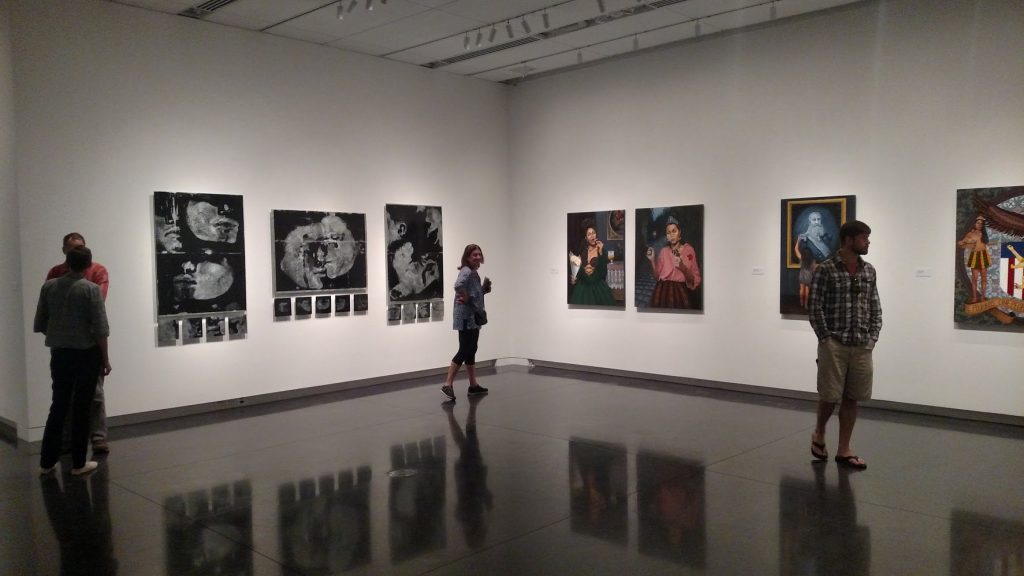This post was written by Demetrios Pagonis, postdoctoral fellow in the Jimenez Laboratory at the University of Colorado, Boulder (twitter).
Organic carbon is the backbone of much of the indoor environment – people, plastics, fabrics, paints, books, foods – all are made with organic carbon. Most indoor smells are also organic carbon, but in the gas phase: the aroma of your coffee, deodorant, dog breath, all organic gases. We’re constantly surrounded by an incredibly diverse set of organic molecules, reacting and transforming hour by hour. With this in mind, our research group set out to quantify the total observable organic carbon in the gas phase of an especially clean indoor environment – the University of Colorado Art Museum*. This work, led by Derek Price and recently published in ES&T, takes measurements from three chemical ionization mass spectrometers inside the museum and characterizes the concentration, reactivity, and fate of all the organic gases measured by those instruments.

Derek found that the total organic carbon concentration was impressively large, three times higher than what you’d find in a typical American city and ten times higher than clean ocean air. He also found that the compounds in the museum were significantly fresher – less oxidized – than those in outdoor air. The reasons for this are well understood by the indoor air community: the concentrations are high indoors because the amount of organic carbon emitted indoors dominates over what is brought in from outdoor air, and the emissions are less oxidized because they only have an hour or two to react indoors before they are ventilated out of the building.
By assigning and estimating oxidation rate constants for every measured compound, Derek was able to give a quantitative description of what kinds of organic gases are reacting indoors. The art museum takes steps to minimize the amount of chemistry that happens in the galleries, in order to help preserve the art. They use custom lightbulbs that filter out all the ultraviolet light, and keep the outdoor air exchange rate low to minimize the amount of ozone brought into the building. These precautions slow down the amount of chemistry happening in the museum, and Derek calculated that only 1% of the organic compounds react while they are inside the museum. But since the total organic concentration is so high, 1% of that total is still a considerable amount of chemistry. In fact, we see that there is just as much chemistry indoors (in terms of reactive flux) as there is outdoors. So next time your dinner smells delicious remember that those compounds are constantly reacting, and that the indoor organic chemistry in your home is powering ahead, steadily oxidizing all the organic carbon it can get a hold of.
*All of the pollutants measured inside the museum were at low enough concentrations that there is no concern for the preservation of the University’s art collections.
Price, D. J., Day, D. A., Pagonis, D., Stark, H., Algrim, L. B., Handschy, A. V., Liu, S., Krechmer, J. E., Miller, S. L., Hunter, J. F., De Gouw, J. A., Ziemann, P. J. and Jimenez, J. L.: Budgets of Organic Carbon Composition and Oxidation in Indoor Air, Environ. Sci. Technol., 53, 13053–13063, doi:10.1021/acs.est.9b04689, 2019.